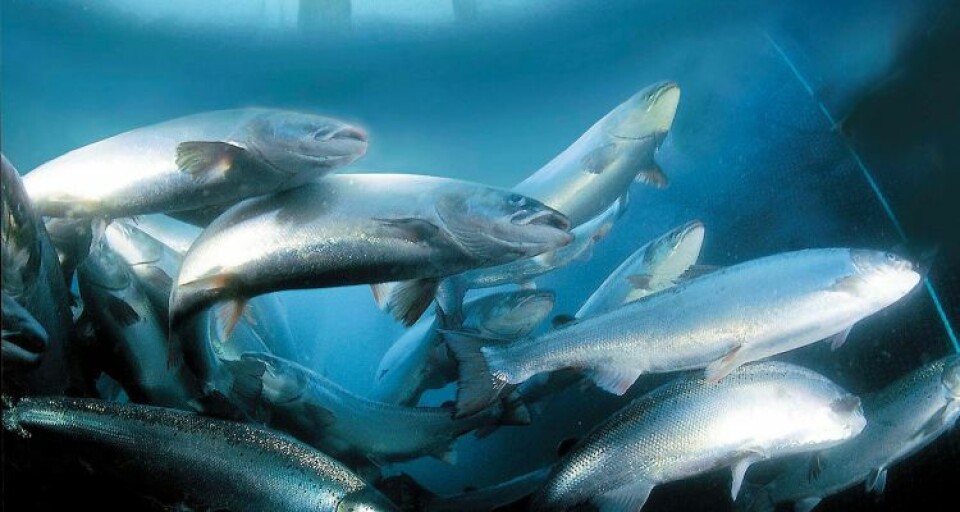
ISA expert issues ‘disease reservoir’ warning
The scientist leading a study that has provided the first evidence of the evolution of infectious salmon anaemia (ISA) from a non-virulent to a virulent strain has warned of the dangers of rarely-cleaned RAS biofilters at smolt farms.
Debes H Christiansen, of the Faroe Islands’ National Veterinary Institute, is the lead author of a paper that proposes that the putatively non-virulent subtype of infectious salmon anaemia virus (ISAV), ISAV-HPR0, acts as a progenitor and reservoir for all virulent ISAVs and is a potential risk factor for the emergence of ISA.

Asked by fishfarmingexpert.com how that risk could be combated, Christiansen suggested keeping the production cycle in the sea as short as possible, fallowing sites, daily removal of dead fish, and reducing stress on the fish.
He also advocated increased biosecurity for increasingly large RAS farms producing large smolts, adding: “Although tanks and equipment is cleaned/disinfected the biofilters are rarely disinfected between production cycles. Thus they are potential reservoirs for continuous circulation of HPR0 and increase the risk of evolution of virulent ISA viruses.”
The study by Christiansen and other scientists from the Faroes, Oslo’s Norwegian Veterinary Institute and Marine Scotland Science in Aberdeen followed a detection of HPRdel (virulent ISAV) at a farm in the Faroes in 2014.
Pathogenic ISA was also discovered at Faroe Islands producer Bakkafrost’s A-73 Hvannasund Norður site last year. Although the fish displayed no clinical signs of ISA, the company decided to harvest a million fish early as a precaution in March. Bakkafrost chief executive Regin Jacobsen later said that a scientific marker had shown up to confirm the presence of the pathogenic ISA virus.
First evidence
The introduction to the scientists’ paper states it presents “the first evidence of genetic and functional evolution from an ISAV-HPR0 variant (FO/07/12) to a low-virulent ISAV virus (FO/121/14) in a Faroese Atlantic salmon marine farm. The FO/121/14 virus infection was not associated with specific clinical signs of ISA and was confined to a single net-pen, while various ISAV-HPR0 subtypes were found circulating in most epidemiologically linked marine and freshwater farms.”
It adds: “Sequence analysis of all eight segments revealed that the FO/121/14 virus was identical, apart from a substitution in the fusion (F) gene (Q266L) and a deletion in the haemagglutinin-esterase (HE) gene, to the FO/07/12 variant from a freshwater farm, which supplied smolts exclusively to the FO/121/14-positive net-pen.”
The researchers infected salmon with the low-virulent FO/121/14 under controlled conditions, reporting that the virus “induced a systemic infection in Atlantic salmon associated with a low mortality and mild clinical signs confirming its low pathogenicity”.
Having established that ISAV-HPR0 represents a reservoir and risk factor for the emergence of ISA, where do the researchers go from here, fishfarmingexpert asked Christiansen.
“The next logical step would be to reduce that risk, by implementing appropriate management strategies. Based on the experience from the Faroe Islands, the risk of HPR0 to evolve to [the virulent] HPRdel is low (this was the first case since 2005). As we discuss in the paper, time is an important factor for the virus to evolve virulence. Thus, one strategy to reduce the risk of HPR0 to evolve to HPRdel is to keep the production cycle in the sea as short as possible i.e. all in – all out. Another important strategy is to implement fallowing periods between production cycles to prevent the potential accumulation of virulent mutations. Daily removal of dead fish is also very important to prevent the spread of potential pathogens including virulent ISAV.
“Another factor driving the evolution of the virus is how fast the virus is replicating in the fish. Stress is known to reduce the immune system of the fish and consequently increase the virus replication rate. One factor that we discuss in our paper and which we speculate was the driver for the evolution of ISAV to virulence was the very stressful period (continuous very bad weather and multiple treatments for sea lice with hydrogen peroxide) prior to detection of the HPRdel virus. We cannot do much about bad weather. But I see the increased handling of the fish (moving to new cages, sea lice treatments both chemotherapy and mechanical etc.) as stressors which increase the risk for the development of ISA and other diseases.”
Will science now seek a method to prevent ISAV-HPR0 evolving into a more virulent disease, or would it be better to somehow eradicate ISAV-HPR0 before that problem arises?
“We cannot eradicate HPR0 in the marine environment. The best strategy here is, among else, to minimise stress, all in – all out production, daily removal of dead fish and fallowing between production cycles to minimise the potential for accumulation of virulence mutations.
“I also think that we have to look into the freshwater pre-smolt farms, particularly the larger and larger RAS farms which are producing large smolts. We and others have shown that HPR0 is circulating in freshwater pre-smolt farms and biofilters are potential reservoirs for HPR0 and other pathogens. Although tanks and equipment is cleaned/disinfected the biofilters are rarely disinfected between production cycles. Thus they are potential reservoirs for continuous circulation of HPR0 and increase the risk of evolution of virulent ISA viruses.
“The larger fish we produce in these RAS farms, the longer production cycles and the higher the risk is for evolution of virulent ISA viruses. To prevent the introduction of HPR0 or any other pathogen into freshwater pre-smolt RAS farms strict biosecurity procedures must be implemented including cleaning/disinfection of the recirculated water.”
The study was published online at the Microbiology Society website and in the Journal of General Virology. Its authors are Debes H Christiansen, Alastair J. A McBeath, Maria Aamelfot, Iveta Matejusova, Mickael Fourrier, Patricia White, Petra E Petersen, Knut Falk.






















































